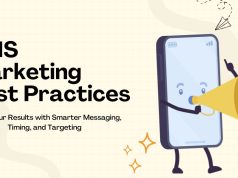The SMS market has evolved from simple text messaging into a powerhouse communication channel that’s reshaping how businesses connect with their audiences. For events and marketing companies, understanding the scope and potential of this market isn’t just beneficial—it’s essential for staying competitive.
SMS marketing has become one of the most direct and effective ways to reach customers, with open rates that dwarf email campaigns and engagement levels that traditional advertising struggles to match. As mobile usage continues to surge globally, the SMS market represents a significant opportunity for marketing professionals and event organizers looking to maximize their outreach efforts.
This comprehensive guide will explore the current size of the SMS market, its growth projections, and why events and marketing companies should pay close attention to these trends. We’ll examine the driving forces behind SMS market expansion, regional variations, and practical implications for your marketing strategy.
Current SMS Market Size and Value
The global SMS market reached approximately $83 billion in 2023, with business messaging accounting for a substantial portion of this revenue. This figure encompasses both person-to-person messaging and application-to-person (A2P) messaging, which includes the bulk of business communications that events and marketing companies rely on.
A2P messaging, the segment most relevant to marketing professionals, generated over $65 billion in revenue in 2023. This category includes promotional messages, transactional notifications, authentication codes, and event updates that marketing companies send to their audiences.
The market’s growth has been particularly robust in recent years. Between 2020 and 2023, the SMS market experienced a compound annual growth rate (CAGR) of approximately 4.2%, driven primarily by increased business adoption and the rise of rich communication services (RCS).
Business SMS usage has grown exponentially, with over 23 billion business messages sent globally each day. For events and marketing companies, this represents both an opportunity and a challenge—the channel’s effectiveness means competition for audience attention continues to intensify.
Growth Projections and Market Trends
Industry analysts project the SMS market will reach $102 billion by 2026, maintaining steady growth despite the emergence of alternative messaging platforms. This growth trajectory reflects several key factors that directly impact events and marketing companies.
The shift toward mobile commerce has accelerated SMS adoption across industries. Retail businesses, service providers, and event organizers increasingly rely on SMS for customer engagement, order confirmations, and event notifications. This trend shows no signs of slowing, particularly as younger demographics become primary consumers.
Marketing automation has also driven SMS market expansion. Events and marketing companies now integrate SMS campaigns with email marketing, social media, and customer relationship management systems, creating seamless multichannel experiences that boost overall campaign effectiveness.
Regional growth patterns vary significantly, with Asia-Pacific leading in message volume while North America and Europe generate higher per-message revenue. Understanding these regional differences helps events and marketing companies tailor their strategies for different markets and audiences.

Key Market Drivers
Several factors contribute to the SMS market’s continued growth, each offering insights for events and marketing companies planning their communication strategies.
Mobile phone penetration remains the primary driver, with global smartphone adoption approaching 85%. This widespread accessibility makes SMS an inclusive communication channel that reaches audiences regardless of internet connectivity or app preferences.
Consumer preferences have shifted toward immediate, concise communication. SMS delivers messages instantly and doesn’t require recipients to download apps or check email accounts. For event notifications and time-sensitive marketing campaigns, this immediacy provides significant advantages over other channels.
Regulatory compliance requirements have inadvertently boosted SMS usage. Two-factor authentication, transaction confirmations, and privacy notifications often rely on SMS delivery, creating a foundation of consumer acceptance that benefits marketing applications.
The integration of SMS with emerging technologies like artificial intelligence and chatbots has expanded the channel’s capabilities. Events and marketing companies can now deploy sophisticated automated campaigns that respond to customer behavior and preferences in real-time.
Industry Segmentation and Applications
The SMS market serves diverse industries, each contributing to overall growth while creating opportunities for specialized events and marketing companies.
Retail and e-commerce represent the largest SMS market segment, accounting for approximately 35% of business messaging volume. These sectors use SMS for order confirmations, shipping updates, promotional offers, and customer service interactions.
Financial services follow closely, utilizing SMS for transaction alerts, security notifications, and account updates. The banking sector’s heavy reliance on SMS has helped establish consumer trust in the channel, benefiting marketing applications across industries.
Healthcare organizations increasingly deploy SMS for appointment reminders, test results, and patient communication. This growth has accelerated since 2020, as healthcare providers sought efficient ways to manage increased patient communication needs.
Events and entertainment represent a growing SMS market segment, with venues, promoters, and organizers using text messaging for ticket confirmations, event updates, schedule changes, and post-event follow-up. This sector’s growth potential remains significant as live events continue recovering and expanding.

Regional Market Analysis
Understanding regional SMS market variations helps events and marketing companies develop targeted strategies for different geographic markets.
Asia-Pacific dominates global SMS volume, with China and India leading in message traffic. However, monetization rates in these markets remain relatively low, presenting opportunities for events and marketing companies that can demonstrate clear value propositions.
North America generates the highest per-message revenue, reflecting mature market conditions and premium pricing for business messaging services. Events and marketing companies operating in this region benefit from higher customer lifetime values but face increased competition for audience attention.
Europe presents a mixed landscape, with Western European markets showing mature adoption patterns while Eastern European countries continue rapid growth phases. Regulatory frameworks like GDPR influence SMS marketing practices, requiring events and marketing companies to maintain strict compliance standards.
Latin America and Africa represent emerging opportunities, with growing smartphone adoption and increasing business messaging acceptance. Events and marketing companies expanding into these markets can establish strong positions as SMS adoption accelerates.
Technology Evolution and Market Impact
Technological developments continue shaping the SMS market, creating new opportunities for events and marketing companies willing to adapt their strategies.
Rich Communication Services (RCS) represents the next evolution of SMS, supporting multimedia content, interactive buttons, and branded messaging experiences. While RCS adoption varies by region and carrier, its eventual widespread implementation will expand creative possibilities for events and marketing companies.
Application Programming Interface (API) developments have simplified SMS integration with existing marketing technology stacks. Events and marketing companies can now easily incorporate SMS into customer journey automation, creating more sophisticated and effective campaigns.
Analytics and measurement capabilities have improved significantly, allowing events and marketing companies to track SMS campaign performance with precision previously reserved for digital channels. This enhanced visibility supports better decision-making and campaign optimization.
Artificial intelligence integration enables predictive messaging, optimal send-time identification, and personalized content creation at scale. Events and marketing companies leveraging these capabilities can achieve higher engagement rates and improved customer satisfaction.

Your Next Steps in the SMS Market
The SMS market’s continued growth presents significant opportunities for events and marketing companies ready to embrace this communication channel’s potential. With billions in annual revenue and steady expansion projected through 2026, SMS represents a stable and effective marketing investment.
Success in this market requires understanding your audience’s preferences, maintaining compliance with regulations, and integrating SMS with broader marketing strategies. Start by evaluating your current communication channels and identifying opportunities where SMS can enhance customer experiences or improve campaign effectiveness.
Consider partnering with established SMS service providers who can navigate technical requirements and regulatory compliance while you focus on creating compelling campaigns and measuring results. The SMS market’s size and growth trajectory make it an essential component of modern marketing strategies for events and marketing companies serious about reaching their audiences effectively.









